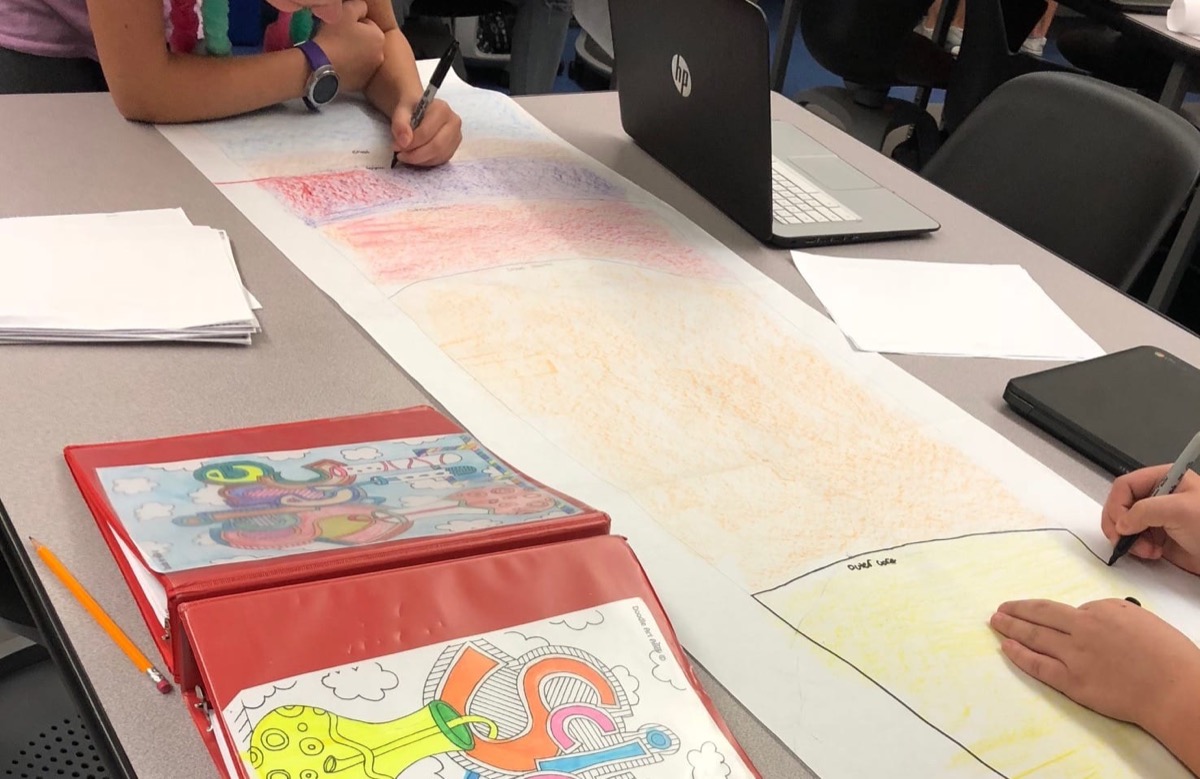Layers of knowledge help make connections
Lisa Hawthorn attended the 2018 OOGEEP Summer Geology Conference. She explains how she used the Differentiation of Earth’s Layers and Scaling out Earth’s Layers with my students at Lakewood Middle School.

Although the Differentiation of the Earth’s Layers lesson doesn’t fit specifically with 7th grade standards, I used it to discuss the idea of physical characteristics of matter (density)—7.PS.1: Elements can be organized by properties—and when we discussed the Earth’s layers we mentioned earthquake waves and how they bounce off layers—7.PS.4: Energy can be transferred through a variety of ways. Mechanical and electromagnetic waves transfer energy when they interact with matter. Students enjoyed making the tubes and seeing the layers occur, especially when the colors separated. This led to a great discussion that liquids, as well as solids, could layer by density. One student said, “I didn’t know liquids could layer.”

The second lesson, Scaling Out Earth’s Layers, was a little more difficult to relate to 7th grade standards. I extended the lesson by adding layers of the atmosphere—7.ESS.1: The hydrologic cycle illustrates the changing states of water as it moves through the lithosphere, biosphere, hydrosphere and atmosphere. We also used talked about relative sizes. One student said, “I can’t believe that the deepest well is so small!” Many students were surprised by the size of the earth as compared to the area that humans occupy.
My students struggled with the conversion factor so we worked through that part as a class. After we reached a conversion factor together, they were able to figure out the scaled model thicknesses. I even had one student who is easily distracted say, “I love doing things like this and creating and coloring!”
In order to connect this more to 7th grade standards, I had students research the physical and chemical composition of each of the layers—7.PS.1: Elements can be organized by properties. This helped them see that the layers alternated with solids and liquids and that that was controlled by density—which brought us back to the density columns that they had created previously. I was impressed with the understanding they showed.
This workshop helped me mostly in learning new content, since I will most likely be teaching eighth grade next year, covering earth science and geology. I attended the workshop hoping to find interesting lessons that would engage students. From the two lessons I have already used, that definitely has happened. Students engaged with the lessons, asked questions, and made connections to content. I am excited to try the rest of the lessons with my students next year!